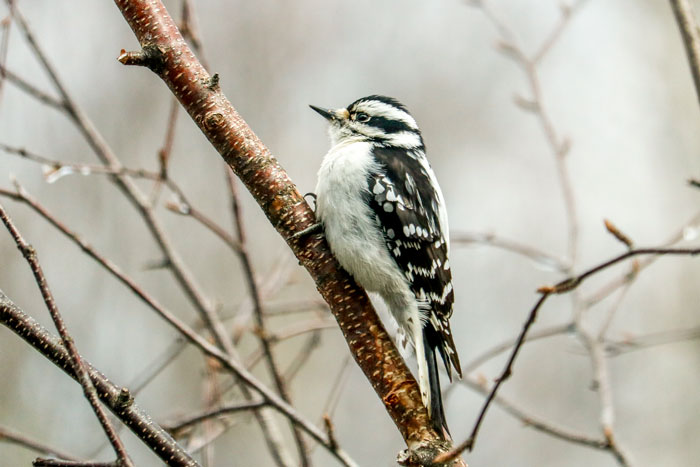
As the smallest woodpecker in North America, the downy woodpecker Picoides pubescens is a common breeding and resident species here in the United States. I frequently observe and photograph these little birds here in my home state of Maine. Downy woodpeckers are well-known, given credit to their common habits and regular visits to bird feeders, parks, and woodlots, where they will frequently join flocks of chickadees and nuthatches, barely outsizing them. This active woodpecker is an active and acrobatic forager that can often be enjoyed by bird watchers and photographers alike. Downies and their larger lookalike, the hairy woodpecker Leuconotopicus villosus, are one of the first identification challenges for beginning bird watchers to master both in the field and at bird feeders.
Personally, my favorite time viewing these birds is during the middle of the summer. This is when I start to see parents spending most of their days bringing the young downy woodpeckers suet from my feeders. This supplementing of their diets by the parents usually goes on for several hours daily for a few weeks until the juveniles move on to bigger and better things as they get older. This will come with the availability and abundance of insects during this time of year. I believe consuming suet also helps the parents to obtain a quick and easy energy source for themselves as they sure expend a lot of their own energy during this part of the breeding season. Soon enough, I will see both the parents and juveniles coming to the feeders well into the winter months, and then the cycle will start all over again.
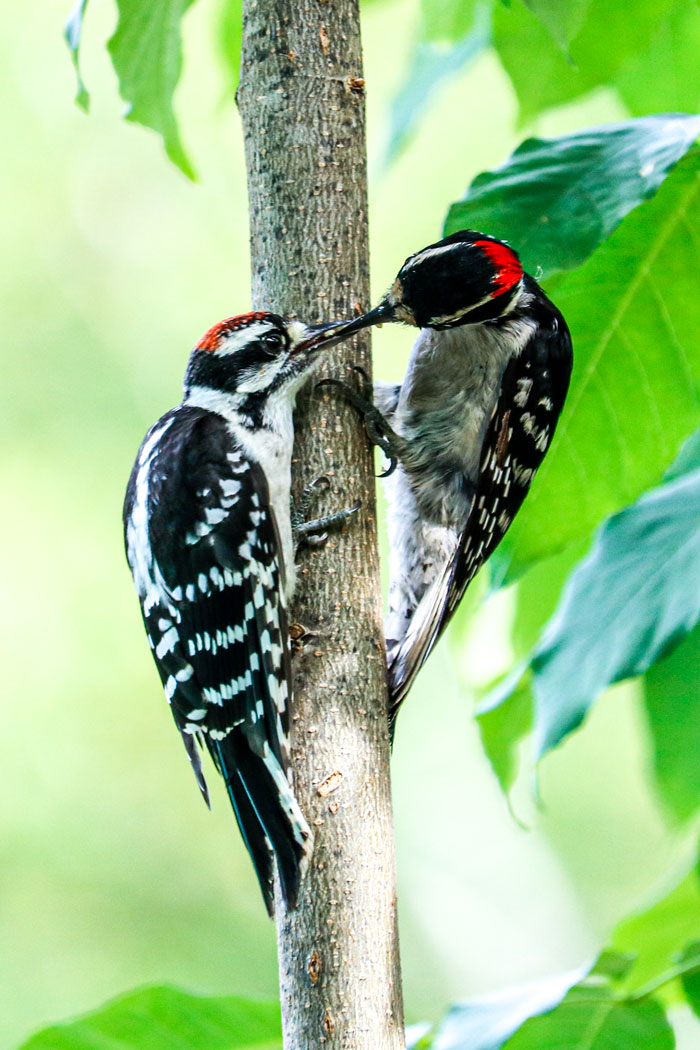
Here are a few photographs and some information about these small but incredible bundles of energy.
Downy Woodpecker Habitat
Downy woodpeckers can be found in open woodlands, deciduous woods, and along streams in particular. They can also be found in human-made habitats including orchards, parks, and suburbs. You may also find these birds in open areas, where they can nest along fencerows and feed surrounded by tall weeds.

Downy Woodpecker Size & Description
Downy woodpeckers are smaller versions of the classic woodpecker body plan. They have a straight, chisel-like bill, blocky head, and wide shoulders, with a straight-backed posture as they lean away from tree limbs and onto their tail feathers that they use as fulcrums. Their bills tend to look smaller for the bird’s size than in other woodpeckers.
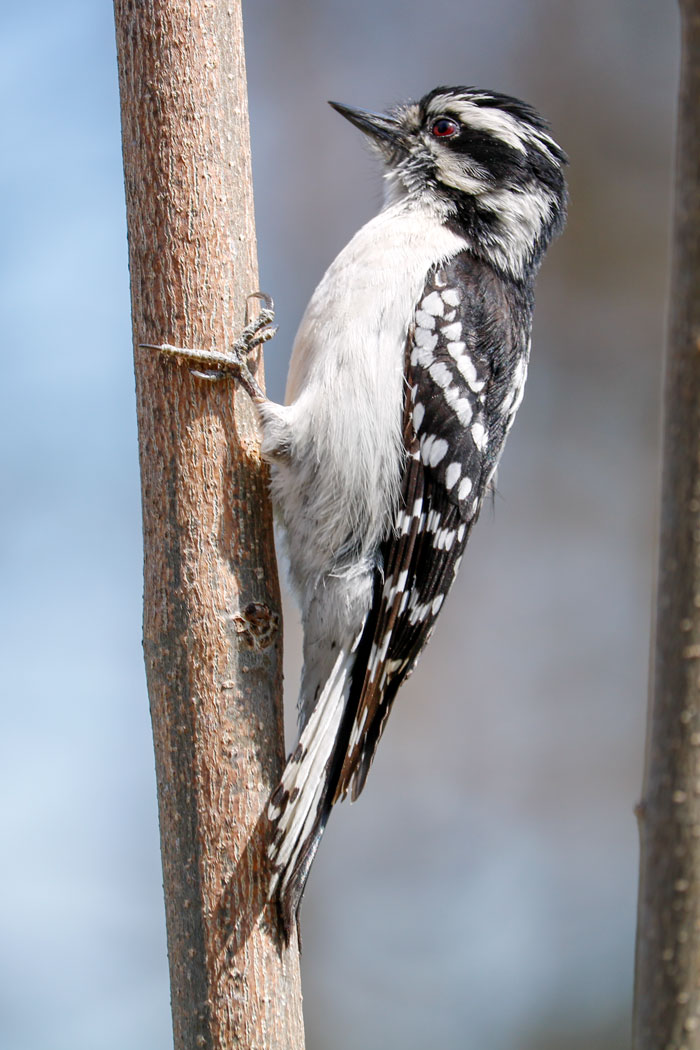
Downy Woodpecker Color Pattern
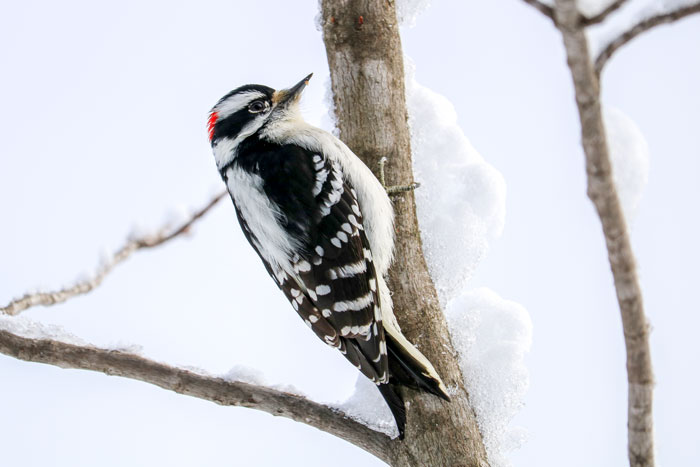
Downy woodpeckers have an almost checkered black-and-white pattern. The black upper parts of these birds are checked with white on the wings, the head is boldly striped, and the back has a broad white stripe down the center. Their common name “downy” refers to the soft stripe of white feathers located on their lower backs. The outer tail feathers are typically white with a few black spots. These can be difficult for observers to see except at close range. Males will have a small red patch on the back of the head. The crown of the male juvenile has a red wash with gray or black flecks, but it will begin to lose this color as it matures and the color comes out on the nape. Females will show less or no red but still have the flecked crown.
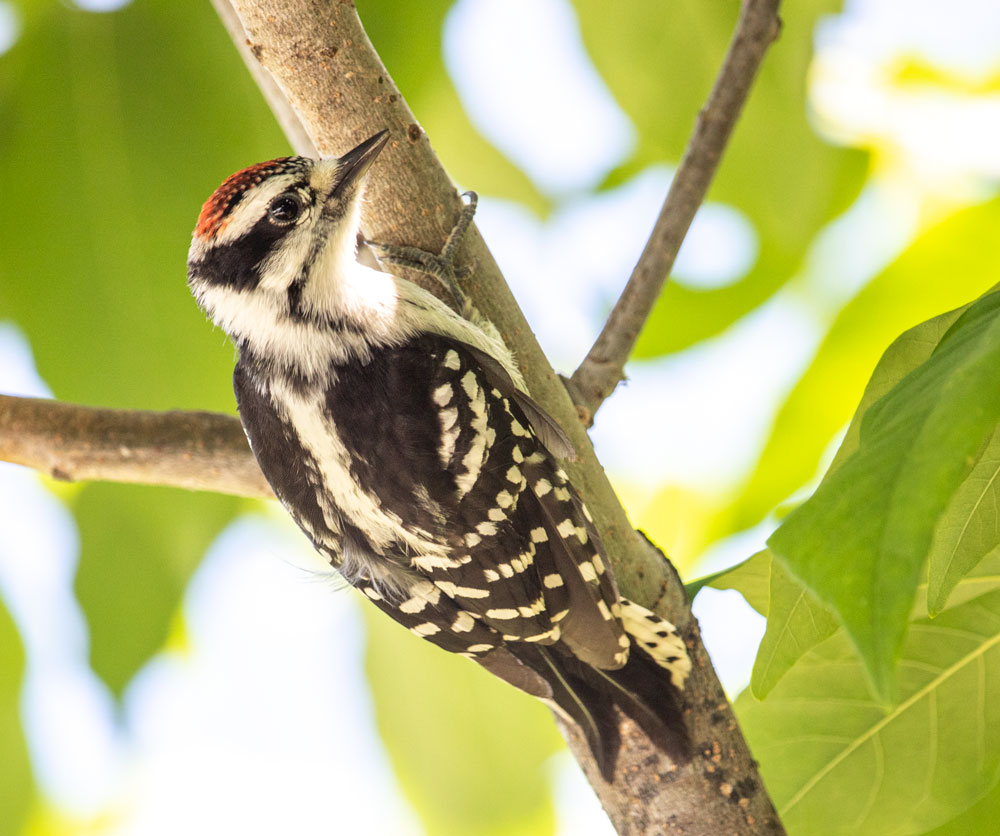
A juvenile downy woodpecker with limited red coloring located on the crown and forward to the eyes.
Downy Woodpecker Behavior & Diet
Downy woodpeckers hitch around tree limbs and trunks or drop into tall weeds to feed on galls, moving more acrobatically than larger types of woodpeckers. Their rising-and-falling flight style is distinctive of many woodpeckers. During the spring and summer months, downies make lots of noise, both with their shrill whinnying call and by drumming on trees.
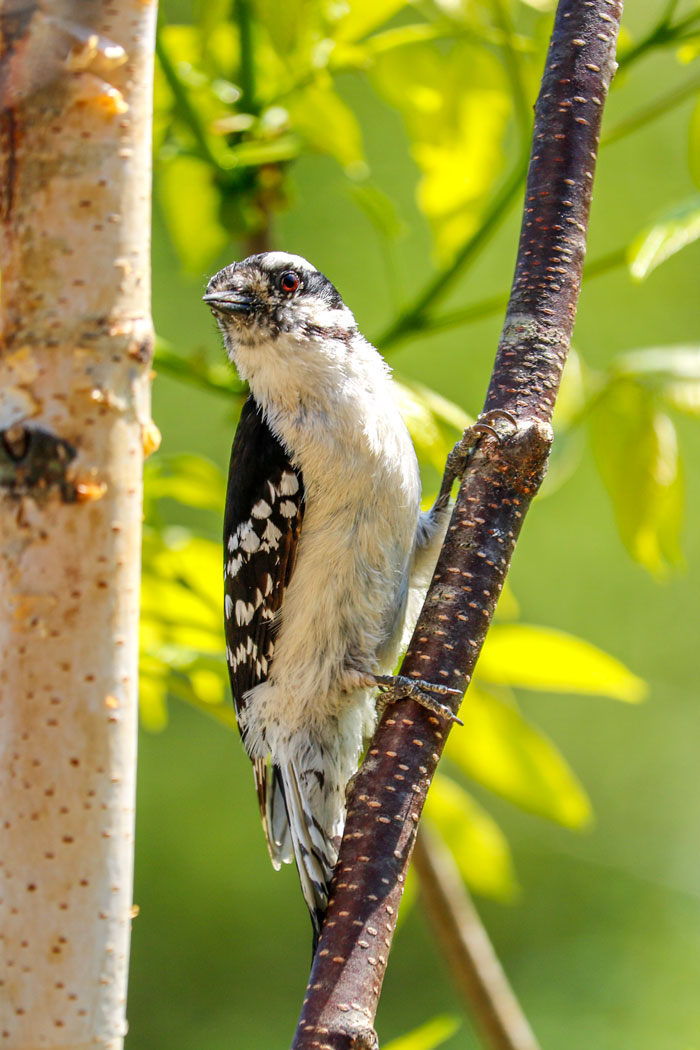
Their diets mainly include the consumption of insects, including beetle larvae that live inside wood or tree bark as well as ants and caterpillars. They eat pest insects including corn earworms, tent caterpillars, bark beetles, and apple borers. Roughly a quarter of their diet consists of plant material, particularly berries, acorns, and grains. As previously mentioned, they can also be commonly found at feeders.
The Sounds of the Downy Woodpecker
The downy woodpecker has a whinnying call that is made by both sexes. This is a familiar sound of deciduous forests during the breeding season. It can be described as a somewhat excited string of hoarse, high-pitched notes that descend in pitch toward the end; the call lasts about two seconds. Excited birds also give a very sharp pik note, occasionally repeated several times.

Other sounds in both sexes include drumming on trees to claim territories, attract mates, and signal readiness for mating. The drumming is made up of very rapid strikes given at a steady pace, almost fast enough to blend into a single uninterrupted sound. Downies also make a slow, deliberate, and much quieter tapping as they excavate, and this can attract a mate to the site as well. Excited downy woodpeckers may also produce a “wing ruffle” sound while in flight.
Downy Woodpecker Nesting
Males and females have separate feeding areas during the fall and early winter, with pairs forming by the late winter. Both the males and females take turns drumming loudly on dead limbs in their separate territories. The nest site is a cavity (excavated by both sexes) in a dead limb or dead tree, usually twelve to thirty feet above the ground, sometimes five to sixty feet. The cavity entrance is often surrounded by fungus or lichen, helping to aid in camouflaging the site.
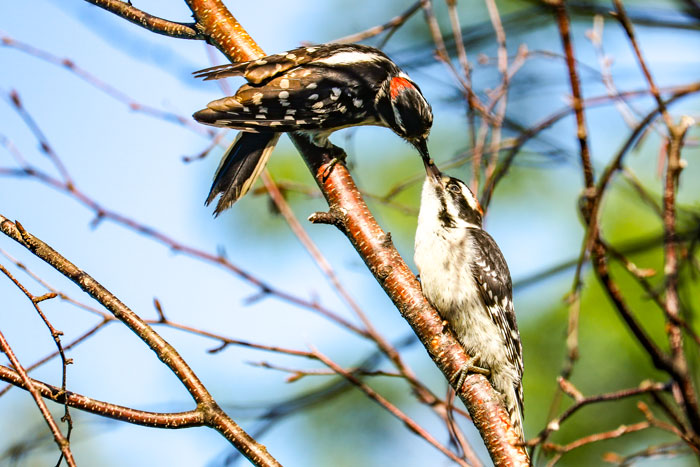
There are four to five eggs, sometimes three to six. Incubation is done by both sexes, for about 12 days. Both parents will bring billfuls of insects to feed the nestlings. The young leave the nest about 20 to 25 days after hatching, they may follow their parents around for a few weeks. They have one brood per year, possibly two in the south.
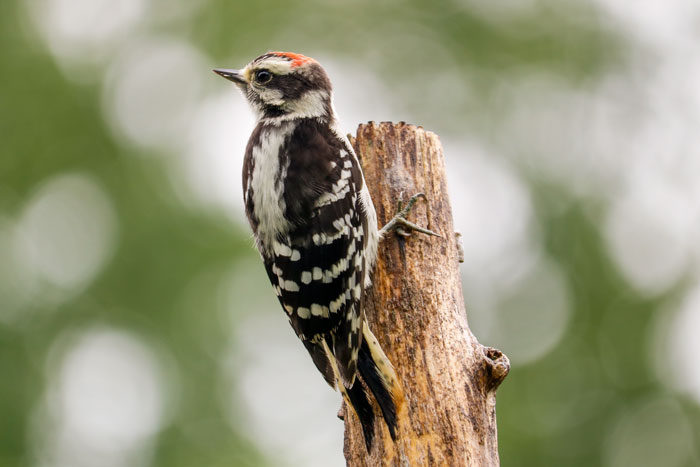
Downy Woodpecker Migration
Downy woodpeckers are considered a resident, year-round species.
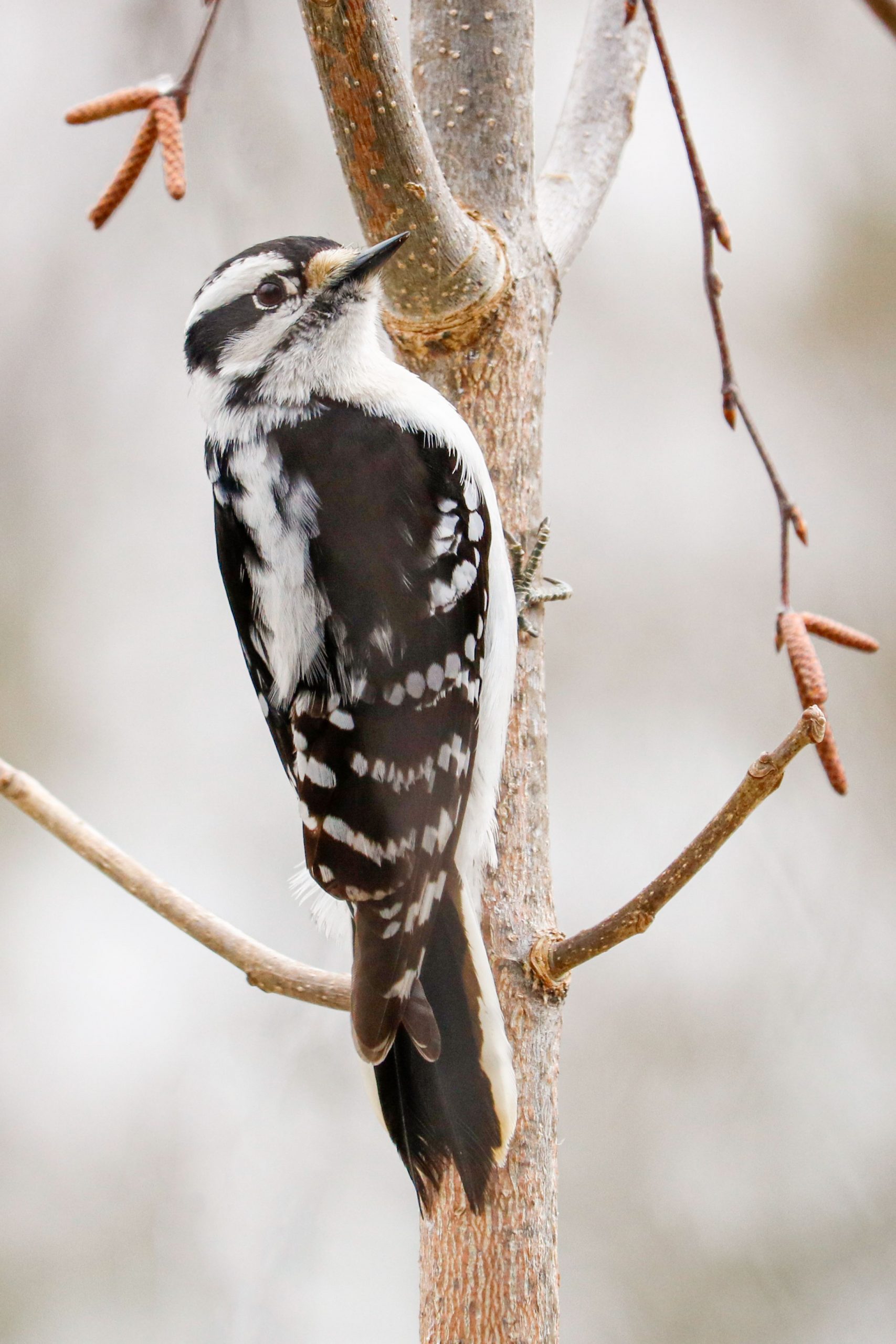
How to Attract Downy Woodpeckers to Your Backyard
Downey woodpeckers are one of the most likely species of woodpeckers to visit backyard feeders. These birds prefer suet, but will also consume black oil sunflower seeds, millet, peanuts, and chunky peanut butter. I have recently introduced suet nuggets and my downies have been enjoying both the peanut butter as well as sunflower flavors. They will also occasionally drink from oriole and hummingbird feeders as well. I have never seen this until recently this summer, along with the water I put out for the birds, the downy woodpeckers have been enjoying drinking from the oriole feeders. An interesting sight indeed!
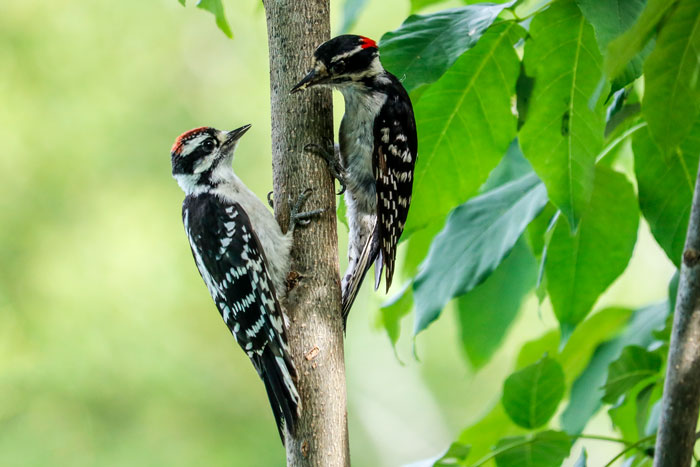
Thank you for reading and I hope enjoyed learning a bit about these little woodpeckers.
Resources used for this post:
allaboutbirds.org & audubon.org
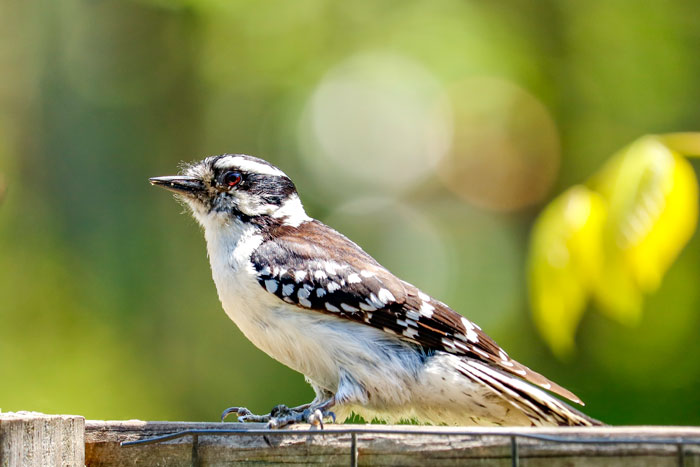
Leave a Reply